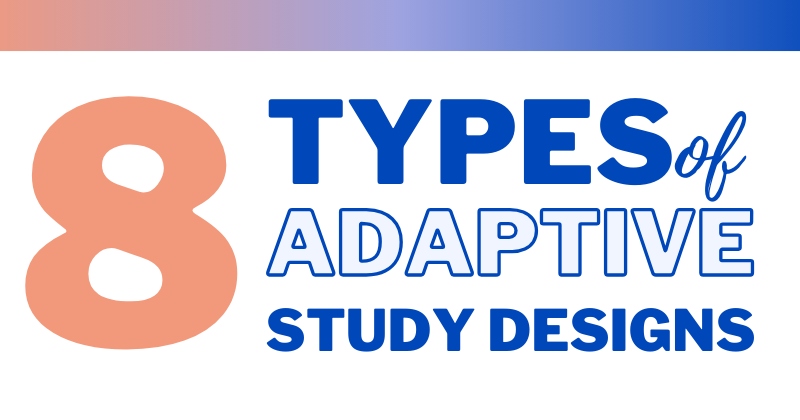Discover 8 Types of Adaptive Designs in Clinical Trials
Adaptive design is paving the way for more efficient and flexible studies. We are thrilled to present 8 types of adaptive designs that are shaping this transformation.

-
Group sequential
Allows for one of more pre-planned interim analyses and incorporates predetermined criteria for adaptations. -
Adaptation to the sample size
Allows pre-planned adjustments to the sample size based on results from interim analyses. - Adaptation to the patient population
Allows for adjustments to the patient population based on results from interim analyses. For instance, following results from interim analyses, enrolment could be restricted to a specific subpopulation.
- Adaptations to treatment arm selection
Allows for pre-planned modifications of treatment arms based on results from interim analyses (adding or terminating arms).
- Seamless phase 2/3
Design that integrates both Phase 2 and Phase 3 components within the same trial. The transition from Phase 2 and Phase 3 is conducted without interruption.
- Adaptations to patient allocation
Allows for adjustments to allocation of subjects to treatment group based on accumulating data during the trial.
- Adaptation to endpoint selection
Allows for adjustments to the selection of the primary endpoint based on results from interim analyses.
- Adaptation to multiple design features
Combines several adaptive designs.
Click here to download the PDF version
For a comprehensive understanding, we recommend reading the full article available: Potvin D, D'Angelo P, Bennett S, Jankicevic J, Bissonnette R. Adaptive designs in dermatology clinical trials: Current status and future perspectives. J Eur Acad Dermatol Venereol. 2024 Apr 15. doi: 10.1111/jdv.20030. Epub ahead of print. PMID: 38619384.
Newsletter
Newsletter subscription resources

